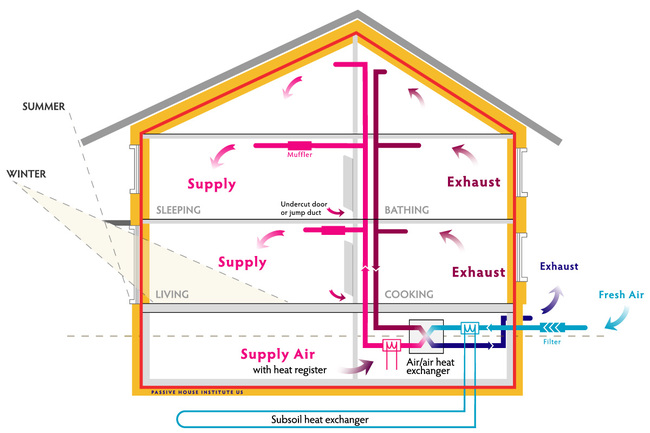The concept of Passive House

Passive building comprises a set of design principles used to attain a quantifiable and rigorous level of energy efficiency within a specific quantifiable comfort level. “Maximize your gains, minimize your losses” summarizes the approach. To that end, a passive building is designed and built in accordance with these five building-science principles:
• Employs continuous insulation throughout its entire envelope without any thermal bridging.
• The building envelope is extremely airtight, preventing infiltration of outside air and loss of conditioned air.
• Employs high-performance windows (typically triple-paned) and doors.
• Uses some form of balanced heat- and moisture-recovery ventilation and a minimal space conditioning system.
• Solar gain is managed to exploit the sun's energy for heating purposes in the heating season and to minimize overheating during the cooling season.
Passive building principles can be applied to all building typologies – from single-family homes to multifamily apartment buildings, offices, and skyscrapers.
Passive design strategy carefully models and balances a comprehensive set of factors including heat emissions from appliances and occupants to keep the building at comfortable and consistent indoor temperatures throughout the heating and cooling seasons. As a result, passive buildings offer tremendous long-term benefits in addition to energy efficiency:
• Superinsulation and airtight construction provide unmatched comfort even in extreme weather conditions.
• Continuous mechanical ventilation of fresh filtered air provides superb indoor air quality.
• A comprehensive systems approach to modeling, design, and construction produces extremely resilient buildings.
• Passive building principles offer the best path to Net Zero and Net Positive buildings by minimizing the load that renewables are required to provide.